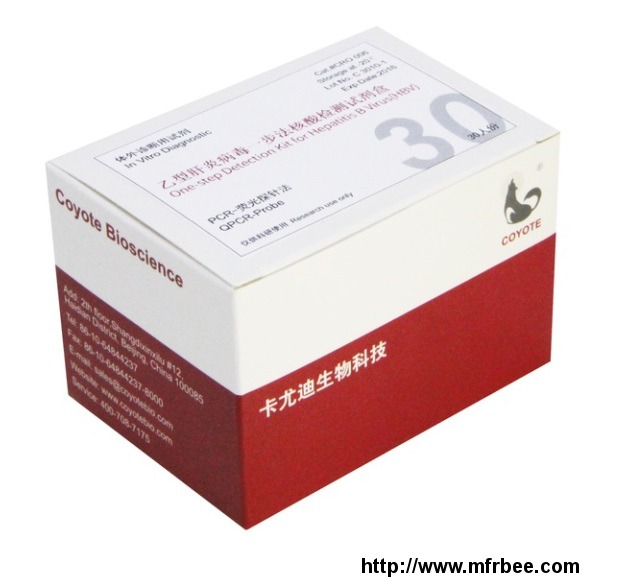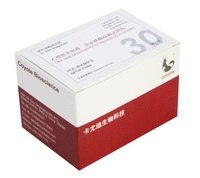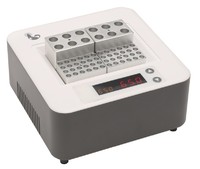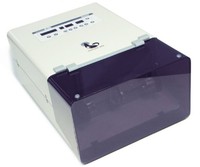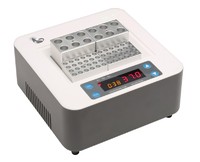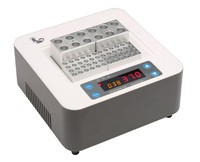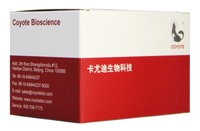One-Step Detection Kit for Hepatitis B Virus (QPCR-Probe)
Specifications
[Product Name]
One-step Detection Kit for Hepatitis B virus (QPCR-Probe)
[Packing Specification]24rxns/kit
[Intended Use]
This kit is used for the qualitative detection of Hepatitis B Virus (HBV) in whole blood and serum samples. It offers auxiliary means for the diagnosis of the HBV infected patients without nucleic acid extraction and purification. Test results should be combined with clinical diagnosis.
[Detection Principle]
This kit adopts PCR method combined with fluorescence probe in vitro amplification technology. In this method, the HBV probe contains a fluorescent reporter dye FAM at the 5'end of the probe and a quencher dye BHQ at the 3'end of the probe. When the probe is intact, the proximity of the reporter dye to the quencher dye suppresses the reporter fluorescence. Probe cleavage during the PCR reaction spatially separates the reporter dye from the quencher dye,
thereby allowing detection of the reporter dye fluorescence. The fragments of reporter dye are displaced from the target, resulting in an increase in fluorescence. This step, which enables the fluorescence signal accumulation and PCR products formed synchronous, thus to achieve qualitative detection the HBV in the infective patient in serum samples, which provide auxiliarymeans for the HBV infection in the treatment of the patient.<o:p>
[Kit Contents]
HBV-PCR Rection Mix: Specific premiers and fluorescent probe of HBV, qRT-PCR Master mix.
HBV Positive Control: Pseudovirus with HBV NP gene established in vitro, Internal recombinant plasmid
Sample Dilution Buffer: PBS buffer
Note: Different batches in the kit components should not be interchangeable.
Analysis sensitivity: 20 copies/rxn.
[Procedure]
1. Sample Preparation/Treatment
Whole blood sample (Sodium citrate anticoagulation) or serum sample
2. Preparation of amplification reagent
Take out the HBV-PCR Rection Mix, Positive Control and Negative
control, centrifuge the sample after thawing. Add 48μl HBV-PCR Mix
into each reaction tube.
3. Adding samples and controls to the reaction tubes
? Separately add the samples from step 1, positive control and negative control to different tubes:
1) Separately add the 2μL serum sample or 0.5 μL whole blood sample from step1 to HBV reaction tube.
2) Separately add 2μL positive control to another HBV reaction tubes positive control.
3) Separately add 2μL negative control to another HBV reaction tube as negative control.
Close the tube, mix thoroughly and spin down the mixture. Operation should be performed on the ice-bath. 2000rmp spin for 10sec. Put the reaction tube on the test instrument.
Note: to avoid the difference from the serum sample, it is recommend to use the serum sample which is clear. For the cloudy sample, if the first test result is negative, please dilute the sample to 4-10 folds using the dilution buffer provided in the kit to detect again.
4. PCR Amplification
Perform the following protocol in the instrument:
Selection of fluorescence channels:
530nm channel (ReporterFAM): HBV
Please refer to the instrument manual for specific channel set detection.
[Quality control]
If the Ct value of positive control sample≤25, and the Ct of the negative control is 0 or>28, this test is valid,or the test is invalid.
[Results interpretation]
a.If the Ct of sample ≤28, report positive for the HBV;
b.If the Ct of sample 30>ct>28, please test again. If the duplicate detection Ct of sample>28, negative control Ct value is none, reported positive for the HBV. If the duplicate detection Ct of sample is 0 or none, reported negative for the HBV; c. If the Ct of sample is no value or>28, report negative for the HBV.
One-step Detection Kit for Hepatitis B virus (QPCR-Probe)
[Packing Specification]24rxns/kit
[Intended Use]
This kit is used for the qualitative detection of Hepatitis B Virus (HBV) in whole blood and serum samples. It offers auxiliary means for the diagnosis of the HBV infected patients without nucleic acid extraction and purification. Test results should be combined with clinical diagnosis.
[Detection Principle]
This kit adopts PCR method combined with fluorescence probe in vitro amplification technology. In this method, the HBV probe contains a fluorescent reporter dye FAM at the 5'end of the probe and a quencher dye BHQ at the 3'end of the probe. When the probe is intact, the proximity of the reporter dye to the quencher dye suppresses the reporter fluorescence. Probe cleavage during the PCR reaction spatially separates the reporter dye from the quencher dye,
thereby allowing detection of the reporter dye fluorescence. The fragments of reporter dye are displaced from the target, resulting in an increase in fluorescence. This step, which enables the fluorescence signal accumulation and PCR products formed synchronous, thus to achieve qualitative detection the HBV in the infective patient in serum samples, which provide auxiliarymeans for the HBV infection in the treatment of the patient.<o:p>
[Kit Contents]
|
Ref. |
Type of reagent |
Presentation (24 rxns) |
Quantity |
| 1 |
HBV-PCR Rection Mix |
1 vial,1500μL |
1 |
| 2 |
HBV Positive Control |
1 vial,60μL |
1 |
| 3 |
Sample Dilution buffer |
1 vial,1000μL |
1 |
| 4 |
HBV Negative Control |
1vial,200μL |
1 |
| 5 |
User Manual |
1 | 1 |
HBV Positive Control: Pseudovirus with HBV NP gene established in vitro, Internal recombinant plasmid
Sample Dilution Buffer: PBS buffer
Note: Different batches in the kit components should not be interchangeable.
Analysis sensitivity: 20 copies/rxn.
[Procedure]
1. Sample Preparation/Treatment
Whole blood sample (Sodium citrate anticoagulation) or serum sample
2. Preparation of amplification reagent
Take out the HBV-PCR Rection Mix, Positive Control and Negative
control, centrifuge the sample after thawing. Add 48μl HBV-PCR Mix
into each reaction tube.
3. Adding samples and controls to the reaction tubes
? Separately add the samples from step 1, positive control and negative control to different tubes:
1) Separately add the 2μL serum sample or 0.5 μL whole blood sample from step1 to HBV reaction tube.
2) Separately add 2μL positive control to another HBV reaction tubes positive control.
3) Separately add 2μL negative control to another HBV reaction tube as negative control.
Close the tube, mix thoroughly and spin down the mixture. Operation should be performed on the ice-bath. 2000rmp spin for 10sec. Put the reaction tube on the test instrument.
Note: to avoid the difference from the serum sample, it is recommend to use the serum sample which is clear. For the cloudy sample, if the first test result is negative, please dilute the sample to 4-10 folds using the dilution buffer provided in the kit to detect again.
4. PCR Amplification
| Pro. | Tem. | Time | Cycle No. |
| 1 | 95ºC | 1 second | 15cycles |
| 50ºC | 1 second | ||
| 3 | 95ºC | 1min | 1cycle |
| 4 | 95ºC | 5 second | 35 cycles |
| 55ºC |
10 second (acquire fluorescence) |
Selection of fluorescence channels:
530nm channel (ReporterFAM): HBV
Please refer to the instrument manual for specific channel set detection.
[Quality control]
If the Ct value of positive control sample≤25, and the Ct of the negative control is 0 or>28, this test is valid,or the test is invalid.
[Results interpretation]
a.If the Ct of sample ≤28, report positive for the HBV;
b.If the Ct of sample 30>ct>28, please test again. If the duplicate detection Ct of sample>28, negative control Ct value is none, reported positive for the HBV. If the duplicate detection Ct of sample is 0 or none, reported negative for the HBV; c. If the Ct of sample is no value or>28, report negative for the HBV.
- Country: China (Mainland)
- Founded Year: 2009
- Address: Rm506 Chuangyezhonglu #36, Haidian District
- Contact: Lily Song
